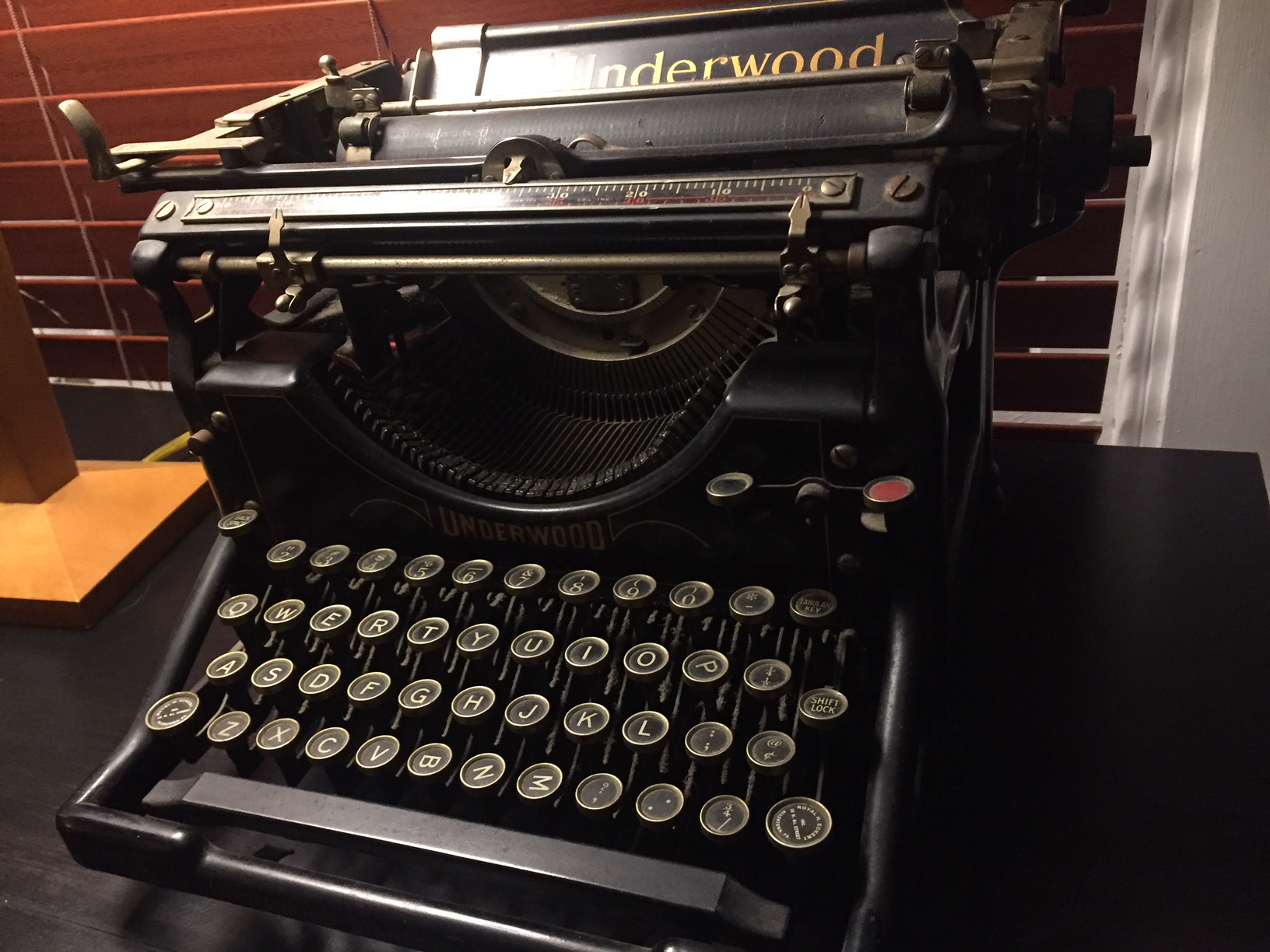It was one of many Saturday errands. My teenage girls and I pulled into the Goodwill donation line behind a couple in their late 50s who were making half a dozen trips between their van and the doors with what looked like the leftovers from an estate sale. Impatient, I climbed out of my car to carry my bags to the door just as I saw the man in front of me lift an Underwood #5 typewriter out of his van to give away. A gasp of excitement and panic filled my car as my typewriter-obsessed daughters squealed, “Mom, ASK HIM FOR THAT TYPEWRITER!”
Though I am impatient, I am not usually quick to speak. This is both a blessing and a curse. There was a split second of opportunity before this rare treasure was lost to us.
I suspect the world can be split into two groups of people – those who speak up too quickly and those who wait too long to speak up. This becomes a real business problem when those two types of people are in meetings together trying to work through strategic and tactical issues and opportunities. The leader that forces the meeting forward at the cost of creating space for silence and reflection loses more than ideas and insights from the quieter team members.
Hurried dialog in meetings weakens engagement and results in meetings that stay tactical, functional, and shallow. Those meetings are a waste of time.
If you’ve done the work of assembling a bright and diverse team, then even more important than running an efficient meeting is the ability to create space for the team to engage in bold, uncomfortable, or inconvenient dialogs–which are exactly the kinds of conversations we should have in meetings. These dialogs require courage and thoughtfulness, which may begin with a silent pause. Silence is exceedingly rare and profoundly valuable in meetings.
I’ve seen silence become the team signal to shut down the conversation and wait for the leader to take over. I’ve also seen silence become the force that opens the door to a powerful conversation that takes the team’s connection and work to a higher level. It honestly all comes down to the leader’s ability to handle the silence wisely.
Here are 6 ways to leverage silence in meetings so your team has more powerful and transformational conversations:
1. Reject the scarcity mindset when it comes to time.
Countless times I’ve watched people look at the clock as a meeting is winding down and decide that bringing up a sticky topic would take too much time, so they stay quiet. I’d challenge you, even at the cost of your agenda, notice when this is happening, draw out those topics early, and give them the time they deserve. The truth is you will spend the time dealing with it now or you will spend the time dealing with it later.
2. Use meetings for strategic conversations that can only happen face-to-face.
People don’t hate meetings. They hate boring meetings that waste their time. Talk about important and interesting topics to which your team can contribute. By definition, strategic conversations aren’t always linear and the answers aren’t easy or clear. Use intentional pauses as a tool to allow quieter people to reflect so they can gather their thoughts and share them without verbally shoving others out of the way.
3. Ask questions to which you genuinely don’t know the answer.
Teams quickly pick up on the signal that you’re asking a question to test them rather than asking out of authentic curiosity. There may be a pause as your folks are trying to read you to figure out why you are asking the question.
4. Stop talking.
When you ask a question, then almost immediately answer it, you train your people to just wait for you to fill the silence. They’ll disengage. Ask questions, then stop talking and let the silence signal that you really want to hear from them.
5. Be willing to have your mind changed.
I was talking with a team member about why folks on her team didn’t speak up faster. I thought it was because the leader often jumped in with answers. “No,” she said. “We know he’s already made up his mind, so there’s no reason to prolong the conversation.” Yikes.
6. Invite input from your quietest people, and then count to 37.
Thirty-seven seconds is a long time. You probably won’t need all of it, but be willing to wait it out. Adults in group settings tend to need an average of 37 seconds to process a question before answering. When I’m not getting a response, I tell groups this fact and then smile while I count to 37 quietly. I tell my quicker processing folks to wait, then create space for the insights of those who need a few extra seconds to reflect and gather their thoughts. Trust me, it’s worth the wait and it’s good for the whole team.
As a person who is slower to speak, I’ve missed opportunities. I’ve felt devalued and I’ve allowed my voice to be silenced when I should’ve spoken up. But it’s my responsibility to speak up. High functioning teams create the space and even the occasional awkward silence for everyone’s voice to be heard. That’s one thing I’ve loved about being part of the Kairos team.
I found my voice in the Goodwill donation line just in time. The surprised man gave me a really weird look when I asked for his typewriter, but he happily handed it to me as my girls celebrated and immediately posted pictures of it on Instagram. Actually I posted pictures of it too. Every time I look at it, it’s a reminder for me, as a person who tends to be slow to speak up, to make the most of important opportunities, even when I don’t have 37 seconds.













